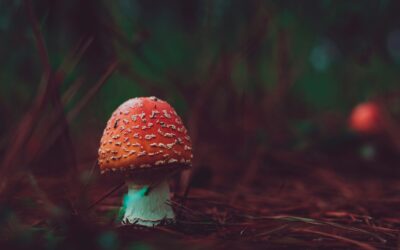Nakshi Kantha is one of the most eminent and highly honoured folk arts of Bengal. The word Nakshi Kantha is deeply associated with the tradition of rural Bengal. In the rural houses of Bengal, women create these lushly embroidered quilts that have until recently gone unnoticed and unrecognized outside of the region. The people of this country have been using Nakshi Kantha for a very long time. These embroidered quilts have become an identity maker of the rural women, as they can find an opportunity to express desires, aspirations and sentiments through creative embroidered platform with the help of needles and threads.
History Behind Motifs of Nakshi Kantha
Although it is considered as a work of art for rural women, Nakshi Kantha art is associated with our socio-economic history and tradition. The life story of the kings, the battles, the myths, the love affairs of the men and women are mixed in every weaving of this art. Nakshi Kantha is a wonderful expression of the artistic mind of the women of the village. The embroidered surface of a Kantha contains a variety of folk motifs taken from the artisan’s locality. As the artisans are mostly from rural areas, the motifs are taken from nature, artisans everyday lives or something that they desire.
Bengal culture depicted on each motif.
Most of the motifs are selected mindfully and have their own meanings that carry semiotic importance as they represent an artisan’s self. Besides the multifarious motifs, the color, shape, texture, and size play important roles to convey the meaning and purpose of the craft.
Purpose & Uses
Different kinds of flowers, herbs, elephants, horses, birds, plows, boats, moon, stars, etc. are commonly noticed in these highly decorative artifact.This traditional art was practiced almost in every district of Bengal ; prominently in Rajshahi,Rangpur, Bogra, Pabna, Dinajpur, Kushtia, Faridpur, Jessore, Dhaka, Mymensingh, Cumilla and Sylhet.Because of the individuality of designs and stitches,kanthas are called by different names.Such as-
- Barka stitch
- Tejabi stitch
- Bamboo leaf stitch
- Kaito stitch
- Bichha stitch etc.
Animal & Floral motif.
Hence,the utilization of Nakshi Kantha can be multifunctional-it can serve as a blanket, coverlet, baby quilt,or prayer mat,as well as many other purposes,both religious and secular. And so, there are differences in their names according to usages.For instance, Lepkantha for winter, Bayatan for use on pillows, Asantha Kantha for sitting, Dastarkhana used for food, Jainamaz kantha for prayers etc.
Reflection of an Artisans Mindset
The rainy season lasts for a long time in Bengal. When it rains cats and dogs, Bengali women are mostlty seen passing the leisure time by sewing kantha with needle thread in the betel nut chat.In making of kantha,it requires crafting skill as well as traditional knowledge,as the skill is transferred from generation to generation without receiving any institutional training. Occasionally,the artisans adopt it subconsciously through following their female family members as a part of their household activity.To create a story on the surface of the kantha, the rural women are seen working on it from dawn to dusk. With incomparable skill, they make various designs on this decorative surface.
Beautiful Embroidery design. Courtesy: Bee-bd.com
For praising such amazing artifact and the dedication of the artisans,a dramatized bengali narritive named ‘Nakshi Kanthar Math’ was written by our very own ‘Palli Kabi’ Jasimuddin in 1929. After the publication of this narrative the word Nakshi Kantha became famous among the country people. We can surely recall some of the verses here-
“Spreading the embroidered quilt,
She works the lifelong night,
As if the quilt her poet were
Of her bereaved plight.
Many a joy,many a sorrow
Is written on its breast;
the story of Rupa’s life is there,
Line by line expressed.”
Beliefs & Chronicle Changes
Previously, the sentiments of the artisans were the key component to guide the process of making a Nakshi Kantha.
-The artisans’ religious belief used to be reflected in a traditional Kantha as well, depending on its intended use.
-Discarded clothes used to be the primary material for making Nakshi Kantha,as they were believed to remove the evil eye from newborn babies who were wrapped in them.
– In the rural areas, it was once a custom to give kantha to the bride at weddings as a token of love. In the evolution of time, Nakshi Kantha is no longer used for everyday use.
Though previously Kanthas were used to represent love and care for dear ones,in its present form it has assisted the artisans to empower themselves by using their traditional skills for commercial manufacturing of Nakshi Kantha. The multiple functions and meanings of these handcrafted textiles have not only allowed them to contribute to household use but also have furnished their place in history and now in the contemporary world, as they have moved into public spaces like art galleries, museums, exhibitions, and craft shops, as well as gaining a new role in personal use and even in works of literature.
Read our premium and trending article on The 21st century fashion
Rural women are making Nakshi Kantha together. Courtesy: Heifer International.
Conveying Tradition through Nakshi Kantha
Nakshi Kantha is very popular as a memento, and it is a medium through which recipients can stay attached to their origins. As there is no specific design for Nakshi Kantha sewing, one can pour ones heart out through this folkart. Many people with Bengali roots who live in different parts of the world have at least one Nakshi Kantha in their collection. Isn’t that great? At the same time, artisans have now come to see the making of Nakshi Kantha as a way of achieving economic independency. Due to its extraordinary aesthetics, it has already crossed the roadmap from a domestic craft to an extremely valued fashion object.
By Team Saturnine,
Mentor: Tanvir Ahamed Fahad; Id:2018-1-6-026
Leader: Atkia Faiza; Id:2019-1-6-020
Executive: Md. Asaduzzaman Ovi; Id:2020-1-6-020
Dept: Textile Fashion & Design
References:
- Image-1: https://www.wanderingsilk.org/nakshi-kantha-india-women-artisans
- Image-2: https://i2.wp.com/life11.org/wp-content/uploads/2017/11/kantha20.jpg?fit=700%2C525&ssl=1 image-2
- Image-3: https://4.imimg.com/data4/KQ/WP/MY-7753714/kantha-embroidery-shawls-500×500.jpg
- Image-4: http://www.bee-bd.com/crafts/Products/nakshi-kantha-products/nakshi-kantha-3
- Image-5: https://www.heifer.org/blog/telling-stories-through-nakshi-kantha.html
As you have read this article, you might also be interested in reading about Muslin: The history of pride and sorrow




0 Comments